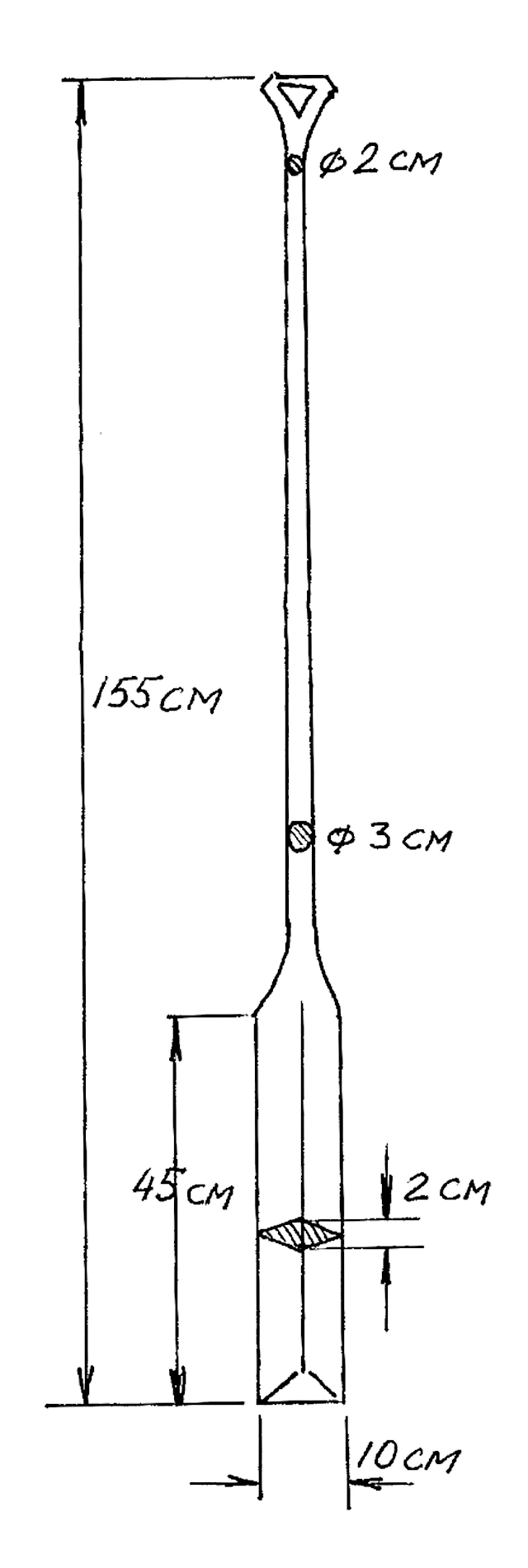The find contained parts for what were interpreted as steering oars. Parts for two were found, one at each end of the boat. There was no indication of how these steering oars had been attached to the boat. Two steering oars were made with ample length shafts. Their use and possible attachment to the boat had to await the sailing test.
Parts of 15 paddle oars were found in the bog. The fact that they were paddles and not oars could be deduced from their relatively short length and the fact that no oar nails were found.
A young rock carving boat (Brandskogskeppet) from Sweden also shows that this ship was propelled by paddling.
The paddle oars found were all of different shapes, but what they had in common was a very narrow blade, completely different from the paddle oars from the Tybrind find, which contained a Stone Age dugout canoe. These paddle oar blades were very short and wide, almost heart-shaped.
However, a narrow, long-leaved paddle vein has been found from both Spodsbjerg and Øgårde in Åmosen. Both of these paddle veins, which were from the Neolithic period, are very similar to the paddles found at Hjortspring.
We chose to standardise the paddle oar production to a single type.
A total of 22 paddle oars were carved. In our standardisation zeal, we overlooked the fact that the paddle oars should have different lengths, partly because of the different heights of the crew and partly because we had increased the sheer of the boat, which resulted in the front and back paddlers having difficulty reaching the water with the standardised paddle oars.
Finalisation
During the construction of the boat, we had coated the outer parts of the boat and the joints with wood tar (identified in the discovery). After the final assembly, the boat was re-coated with tar on the outside, while the interior was saturated with linseed oil.
The boat was ready for launch in May 1999 after five years and 10,000 man-hours of labour.





